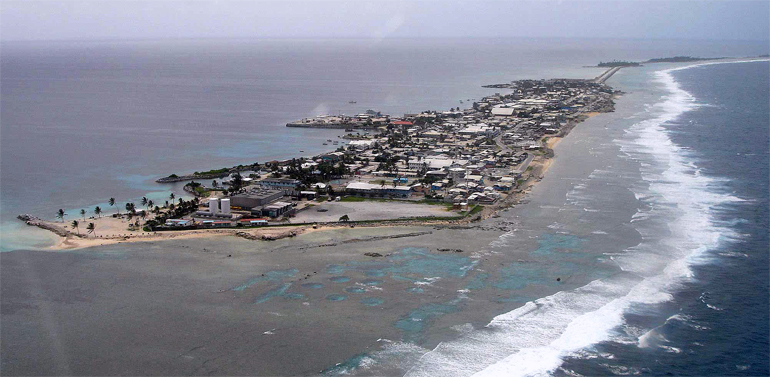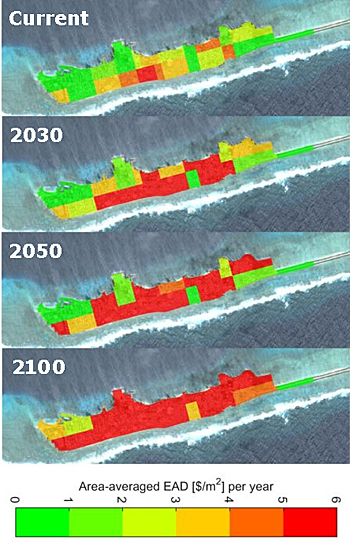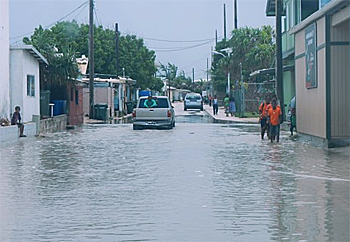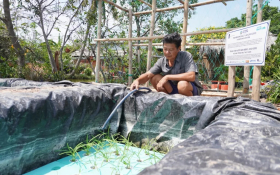Simulations show four folding of damage at most densely-populated Pacific island in near future

Simulations by scientists from Dutch research centre Deltares and Joint European Research Centre show that the Marshall island Ebeye is becoming more vulnerable to natural disasters and sea level rise.
The annual damage is already very extensive in the present situation. According to the scientists this may constitute a serious threat to the daily life of local inhabitants and the economies of the Marshall Islands and other low-lying island countries. Ebeye is with 4,000 inhabitants the most densely populated Marshall Island in the Pacific. The scientists published their findings in the most recent issue of Journal of Regional Environmental Change.
 Damage at Ebeye is expected to four fold by 2100. Predicted development of annual damage (in US dollar/m2) on Ebeye (Giardino et al., 2018)
Damage at Ebeye is expected to four fold by 2100. Predicted development of annual damage (in US dollar/m2) on Ebeye (Giardino et al., 2018)
Factor four more damage
The island of Ebeye is a small strip of land on the Kwajalein atoll (Republic of the Marshall Islands) in the middle of the Pacific Ocean. It has an average height of about 2 m above mean sea level and so it is highly vulnerable to natural hazards and climate change.
‘Annual damage to property and infrastructure may increase on Ebeye by a factor of three to four by the end of the century according to standard RCP scenarios for sea level rise,’ says Alessio Giardino, one of the researchers and a coastal engineer and disaster risk specialist at Deltares.
State-of-the-art modelling
Simulations were carried out at Deltares using a state-of-the-art modelling train that included the assessment of offshore hazards, an assessment of the impact on property and the population on the islands, and the presentation of the results as risk maps and cost-benefit analyses, all for a range of climate change scenarios.
Useful input for a resilience project
‘Quantitative risk-based information is extremely useful to help increase resilience and improve planning for small islands’, says Denis Jean-Jacques Jordy, lead environmental specialist at the World Bank.
 Flooding on the island of Ebeye during a daily, non-extreme, event
Flooding on the island of Ebeye during a daily, non-extreme, event
‘This study informed the preparation of a 49 million US dollar resilience project funded by the World Bank and the Green Climate Fund.’ According to Jordy the results can also serve as a proxy for many other islands in similar situations.
The study was conducted in close collaboration between Dutch scientists from Deltares, the SISRI team from the Global Facility of Disaster Reduction and Recovery of the World Bank, the Joint Research Centre from the European Commission and the government of the Republic of Marshall Islands. The study was published in the Journal of Regional Environmental Change.
The full article is available online.
This news item was originally published on the website of Deltares.
Read also on this website
● Worldwide sand beaches erode less dramatically than assumed, 27 April 2018
● Scientists develop Beware-tool to asses flood risks along coral reef coast, 24 November 2017
● World’s first floating city to be developed in French Polynesia, 22 February 2017
● Expertise: Enabling delta life
More information
Deltares
Delft, the Netherlands
+31 88 335 8273
www.deltares.nl/en
Disaster Risk Management Knowledge Centre
www.drmkc.jr.ec.europa.eu



